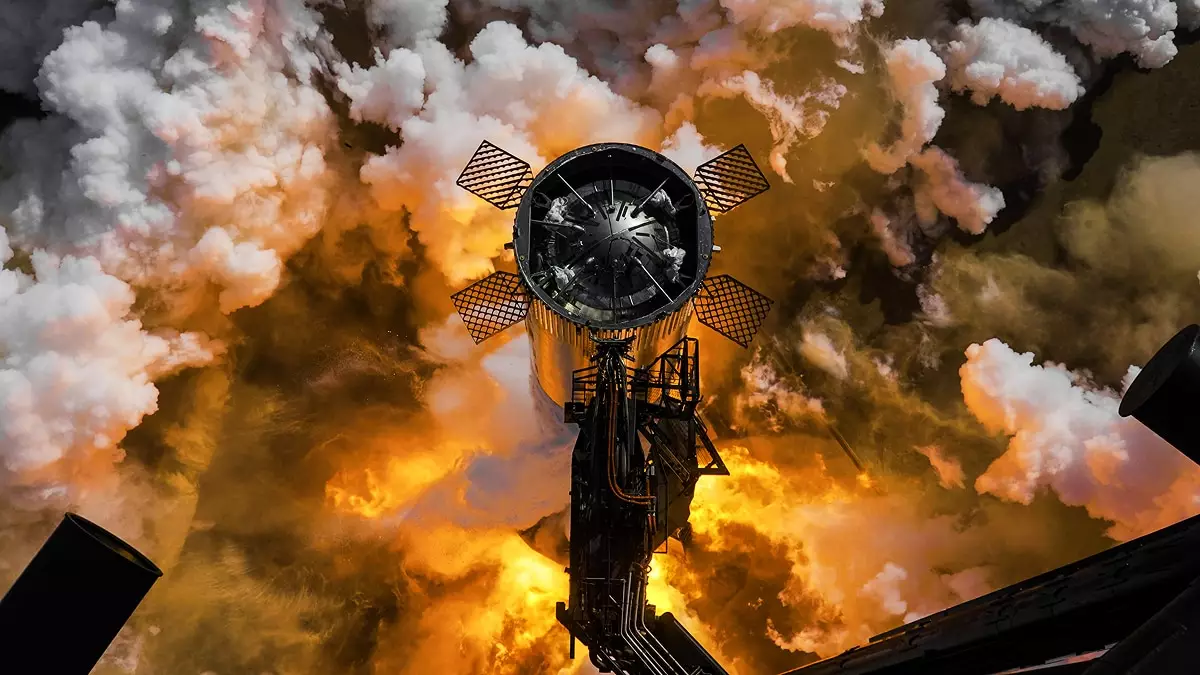SpaceX is making significant strides in its ambitious Starship launch system, recently completing static fire tests on both the Super Heavy booster and the Starship second stage. Conducted at the company’s Starbase facility in Texas, these tests serve as critical benchmarks in the preparations for the next integrated flight test. The full-duration test of the Super Heavy booster, which involved all 33 Raptor engines, was designed to replicate the launch conditions, ensuring that the booster can perform as expected during an actual launch. This rigorous simulation is essential not only for the success of the upcoming mission but also for building confidence in the durability and efficiency of the Raptor engines.
In addition to the Super Heavy booster tests, the second stage of Starship underwent its own series of evaluations. These engine tests focused on variable thrust conditions meant to mimic the diverse scenarios the spacecraft would encounter during flight. By subjecting both stages to stringent testing, SpaceX is seeking to refine and optimize their propulsion systems, which are pivotal for the overall mission success. The recent tests also reflect the company’s commitment to a data-driven approach, where each test contributes valuable insights into the vehicle’s performance, informing future design adjustments and operational strategies.
Looking ahead, the integration of both stages is a key component of the next mission, known as Integrated Flight Test IFT-8, which could potentially unfold by the end of February, pending regulatory approval from the Federal Aviation Administration (FAA). The FAA’s oversight underscores the challenges and complexities associated with launching such advanced space vehicles, especially as SpaceX aims to establish a routine launch cadence for the Starship system. Achieving multiple launches within a year is crucial for SpaceX’s long-term goals, which include improving reusable rocket technology.
Reflecting on previous tests, particularly IFT-7, demonstrates the iterative nature of SpaceX’s approach. While the Super Heavy booster managed to be caught using robotic arms on the launch tower, the loss of communication with Starship’s second stage signifies potential weaknesses that need addressing. Reports of debris falling over the Caribbean raise concerns about in-flight stability and recovery, prompting engineers to focus on design enhancements aimed at improving flight reliability and controlled descent. This continuous feedback loop of testing and refinement is characteristic of SpaceX’s operational ethos.
Ultimately, the successful evolution of the Starship system is vital not only for SpaceX’s aspirations but also for international space missions, like NASA’s Artemis program, which is on target to eventually return astronauts to the Moon. Scheduled to use Starship as a lunar lander in Artemis 3 in 2027, these missions highlight the vehicle’s transformative potential for human exploration. However, achieving the necessary validation through additional test flights is paramount for safe human spaceflight and for expanding commercial opportunities. As SpaceX pushes boundaries in aerospace innovation, the road ahead is filled with both challenges and promising possibilities.


Leave a Reply